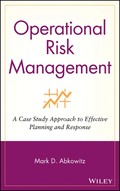John Lambert has been expelled from the Safety Institute of Australia (SIA). This is a fact that the SafetyAtWorkBlog would not usually report on due to privacy concerns but Lambert has already brought his expulsion to the attention of his occupational health and safety colleagues through various online discussion forums and has agreed to answer the questions below.
A quick background to his expulsion is that there was considerable debate in some sections of the Safety Institute of Australia about disciplinary action being taken against a Victorian Committee Member, Phillip Kamay. Many members, including John Lambert, saw an injustice and expressed opinions and advice, often, in email and on SIA discussion forums. It appears that Lambert overstepped the boundaries of criticism in some correspondence and complaints were lodged with the SIA
The National President of the Safety Institute of Australia, Sue Pilkington, has repeatedly promised answers to five questions about John Lambert’s expulsion for almost two weeks. No answers have yet been received but will be incorporated into this blog posts, if, and when, received.
Lambert answered some questions from us pertaining to his expulsion. Below is a slightly edited version of his response: Continue reading “Safety Institute expulsion raises questions about fairness”



